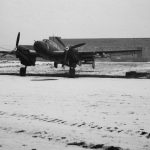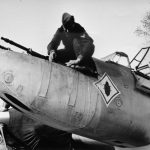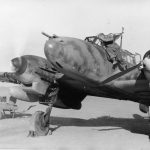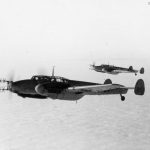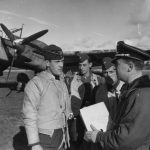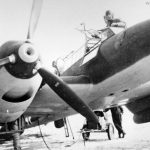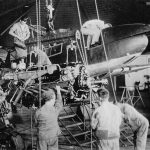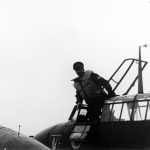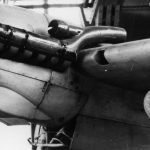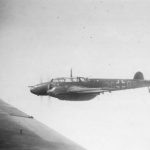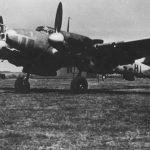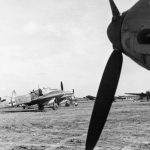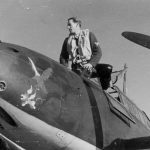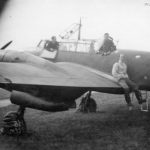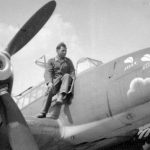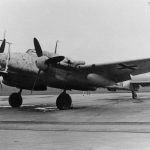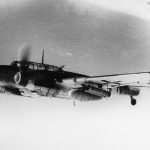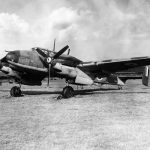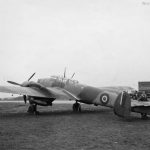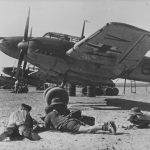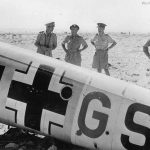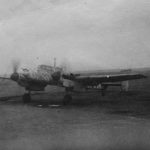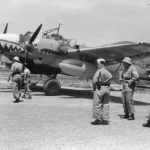Naxos receiver
Luftwaffe mechanics perform ground maintenance on a Me110
Overall black Me110 from NJG 1
Me 110 NJG, Holland
Me 110 of the III./ZG76
Close-up of the front part of fuselage of Me110
Me 110 of III/ZG 26 in flight
Me 110 R4+CC of the II/NJG 2, Holland 1942
Me110 F-3 with drop tanks
Bf110 G-4a/R1 of the NJG6 in flight
Crews with Me 110 III/ZG76
Me110 of the III/ZG 76
Me110 of the 5./ZG 76
Me110C of the 9/NJG 3 Herdla airfield
Bf 110 4./NJG1
Me 110G with FuG 218
Me 110G with gondola mounted under the fuselage
Me110F
Me110C of I/ZG2 flwon by Gerhard Winkler
British Me 110D named “The Belle of Berlin”
Luftwaffe Mechanics Working on Me 110
Luftwaffe Airman Recording a Kill
Hauptmann Wolfgang Falck leaving cockpit of his Bf 110 1942
exhaust flame damper
Bf 110 of NJG 3
Bf 110 B in flight
Bf 110 3C+GR in flight, Summer 1942
Bf 110 4ZG 76 Leeuwarden
Bf 110 of the 4/NJG1
Bf 110G-4a/R1 +HL
Bf 110D W.Nr. 3188 3U-FR 7ZG 26
Bf 110C NJG 1
Bf 110C D5-DT 9/NJG 3 in Norway
Luftwaffe pilot pose in front of Bf 110 from ZG1
Bf110 Twenthe
Bf110 Stab StG3
Bf110 SL-IC
Bf110 of the II/ZG 1, March 1943
Bf110 Rudi Reitz
Bf110 refueling France
Bf110 nose
Bf110 NJG 1 2
Bf110 NJG 1 with opened pilot’s canopy
Bf110 NJG4
Bf110 ZG26 1939
Bf 110D W.Nr. 3341 S9+CK of 2/Erpr.Gr. 210 on display at Hendon Park, August 1940
Bf 110D W.Nr. 3341 S9+CK of 2/Erpr.Gr. 210 on display, August 1940
Bf110 II/ZG1
Bf 110G-4b/R3 W.Nr. 740 055 C9-EN of the NJG 5 Dübendorf, Switzerland
Bf 110G-2/R3/U9 equipped with rockets
Bf110 engine
Night fighters Bf110 E-1/U1 of 7/NGJ 4 3C+GR and 3C+LR
Bf110 cockpit
Bf110 WNr. 2177 AX772 5
Bf110 AX772 Duxford May 1942
Bf110 AX772
Bf110 AX772 3
Bf110 AX772
Bf110 AX772
Bf110 Eastern Front
Bf110 Africa 2
Bf110 3U+
Bf 110 3U+GS
Bf110 of the ZG 26 Africa
Me110 3U-MS Africa
Damaged Bf 110 U8+GK of 2/ZG26 1940
Damaged Bf 110 U8+GK of 2/ZG26 1940
Bf110D-3 Mosul
Bf110G-4
Bf110G
Bf110G crew
Bf110 1945
Bf 110D-3 of the Sonderkommando “Junck”
The Messerschmitt Bf 110 (later called the Me 110) was a German twin-engine medium fighter in use by the Luftwaffe during the Second World War. Based on the concept of the “Zerstörer” (“destroyer”), this aircraft had some successes during the Polish and French campaigns, such as during Operation Paula, which resulted in the loss of 10 German aircraft, including only 4 Bf 110. But during the Battle of Britain, the Bf 110 showed serious weaknesses as a day fighter against the faster and more manoeuvrable single-engine Supermarine Spitfire: 237 were available at the beginning, 223 were shot down. It was later adapted to ground attack and night fighter roles where its range, firepower and ability to carry radar made it useful.
In June 1934, the Reich Aviation Ministry (RLM) published a specification for a long-range, heavily armed fighter. Messerschmitt developed the twin-engine Bf 110, Focke-Wulf the Fw 57 and Henschel the Hs 124. Only the Bf 110 met expectations and was selected. Field Marshal Hermann Göring once declared: “The Messerschmitt 110s will be like Hannibal’s cavalry protecting his elephants; the bombers will be my elephants”. With the Bf 110, the Luftwaffe defined a new concept, certainly expensive, but which seemed viable at the beginning of the war, the Zerstörer (Destroyer), which was presented in the form of a large, twin-engine, two-seater fighter, capable of defeating any opposing aircraft because it carried a much greater armament than a standard fighter and with a greater fuel capacity, which allowed it to have a much greater range than its little brother the Bf 109 (the first Bf 110 had a range of 800 km, i.e. about twice that of the Bf 109) or any other single-engine fighter. The Bf 110 was easy and pleasant to fly, and contrary to popular belief it had a small turning radius for an aircraft of its size, almost identical to that of a single-engine fighter. However, its low roll speed made it vulnerable in combat.
Early variants: A and B
The prototype Bf 110 V1, powered by two 980 hp Daimler Benz DB 600A engines, made its maiden flight on 12 May 1936 at Augsburg.
Initially the pre-production Bf 110A were to be powered by DB 600s, but due to delivery delays, the four Bf 110As produced were fitted with Junkers Jumo 210 Da engines of only 610 hp, and an offensive armament of four MG 17 7.92 mm machine guns. Their first flights took place between August 1937 and March 1938. On 19 April 1938, the first of two Bf 110 B-0 equipped with 670 hp Jumo 210G flew. The first production model, the Bf 110 B-1 received Jumo 210Ga and an armament completed by two 20 mm MG FF cannons. A total of about 45 Bf 110Bs were produced, including B-2 fitted with a camera and B-3 converted into two-seater trainers. As the engines were not very satisfactory, the aircraft could never be considered as a front-line aircraft. It could not be tested in Spain and was already relegated to training when the Second World War began.
Major production series:
C
After the small quantities of Bf 110 A and B, the Bf 110 C started to be delivered to the Luftwaffe in February 1939, equipped with DB 601B engines. Marshal Göring then authorised the formation of several Zerstörergruppen, but by the following September, only three of these units had been equipped. They first took part in the Polish campaign and then, the following year, in the Norwegian and French campaigns. Several variants of the C were produced:
C-1 (max speed: 540 km/h); the C-1/U1 for towing gliders.
C-2 equipped with new radio sets; the C2/U1 equipped with ‘barbette’ machine guns (remote-controlled mini casemates placed on the rear flanks)
C-3 with improved guns.
C-4/B fighter-bomber, carrying two 250 kg bombs, DB 601Ba engine
C-5 daytime reconnaissance fighter
C-6 armed with two 30 mm guns under the fuselage.
C-7 fighter-bomber, carrying two 500 kg bombs, DB 601P engine
Because of the priority given to the Zerstörer, the production was assigned, in addition to the Augsburg factory (MIAG), to the firms Focke-Wulf and Gothaer Waggonfabrik (GWF). In total, in 1939, 315 Bf 110C were delivered. On 10 May 1940, the first day of the Battle of France, 355 Bf 110Cs were on the line. It soon became apparent that this twin-engine aircraft did not have the agility to fight the enemy’s single-engine fighters: 35% of the aircraft involved were lost by the end of May. As will be seen later, this lesson was not learned soon enough.
D
The Norwegian campaign, which began on 9 April 1940, showed that the Bf 110C’s range, although important, was insufficient for this huge territory, particularly when it was necessary to protect sea convoys along the coast. The Messerschmitt design office therefore conceived a huge plywood tank containing 1,200 litres, called the Dackelbauch (dachshund belly), mounted under the fuselage. The performance of the aircraft, in its first Bf 110 D-0 (modified C-3) and D-1/R1 variants, was naturally greatly reduced, and worse, once empty but still filled with highly flammable vapours, the tank had an unfortunate tendency to explode, leading to certain losses that were long misunderstood.
At the start of the Battle of Britain, ten Bf 110 Gruppen were on the line, almost all of them based in northern France, at a time when the D-1/R2 with two 900-litre drop tanks under the wings was beginning to be delivered. From the very first attacks in force, Bf 110 losses were significant: 17 aircraft on 11 August 1940, 11 the next day, 20 the day after. The heaviest losses were recorded on 15 August, when 27 aircraft did not return. In total, during the Battle of Britain, 300 Bf 110s were lost. Clearly, as simulations might have suggested, such twin-engine aircraft were no match for the single-engine Hawker Hurricanes and Supermarine Spitfires in aerial combat. The Luftwaffe’s daylight attacks ceased in the autumn of 1940. A new and growing threat to Germany came in the form of strategic bombing, which began on the night of 15/16 May 1940 with a raid by 99 twin-engine Hampden, Vickers Wellington and Whitley aircraft, at a time when only the Flak was defending German territory. Consequently, as soon as they were withdrawn from offensive units, the Bf 110s were used as night fighters in the Nachtjagdgeschwader (NJG), with a first specialised version called D-1/U1. This night fighter model carried Spanner infrared sensors in the nose.
The classic D-2 and D-3 versions, but carrying bombs and two 300-litre tanks, were engaged in 1941 in the Balkans, the Mediterranean and Libya.
E
Following the heavy losses suffered by the Zerstörergruppen during the Battle of Britain, the Bf 110 was now produced as a fighter-bomber and night fighter. The pre-production Bf 110 E-0, then the E-1, still equipped with 1100hp DB 601B engines appeared in May 1941. However, the 1175 hp DB 601P was soon available for the E-1/U1 variant equipped with a Spanner sensor, the E-1/U2 with a third seat for a leitoffizier (officer controller) and the E-1/R2 which could carry two 1000 kg bombs under the fuselage. In 1942, the E-2 fighter-bomber and the E-3 reconnaissance aircraft began to appear. Latter could be equipped with two auxiliary tanks of 300 or 900 litres under the wings, and for the first time, in order to reinforce its defence, two MG 17 7.92 mm machine guns firing towards the rear were mounted in the sides of the fuselage. This traditional increase in military payloads, without a significant increase in power, again led to a degradation of the Zerstörer’s flying qualities and performance.
F
Manufactured in parallel with the Bf 110E, the F appeared in the summer of 1941, benefiting from a welcome increase in power with its 1350hp DB 601F engines, and a 57mm thick armoured windscreen. Drop tanks, optional on earlier versions, became standard. Its variants:
pre-production Bf 110 F-0 similar to the E-1, but with enlarged oil coolers
F-1 fighter-bomber version, with one ETC 500 bomb rack under the fuselage, and four ETC 50 bomb racks under the wings.
F-2 without a bomb racks, but equipped with four 21 cm rockets under the wings, in order to destroy concentrations of enemy heavy bombers
F-3 reconnaissance plane, with a camera mounted in the cockpit floor.
Production was halted in October 1941 at the MIAG factory, then in December at the GWF factory, due to the imminent commissioning of the Me 210. Unfortunately, due to the latter’s abysmal failure, production of the Bf 110 had to be resumed in February 1942. At this stage, RAF night raids on Germany were increasing, and the United States had been at war with the Third Reich since 7 December 1941, which led to fears of a sharp increase in the bombing waves on the latter. This led to the appearance of :
F-4 night fighter, with FuG 202 Lichtenstein radar. A third seat was installed in the cockpit, accommodating a radar control officer
F-4/U1 night fighter had two machine guns installed at the rear of the cockpit, which allowed it to fly horizontally under Allied heavy bombers while ducking them. This type of installation was called “Schräge Musik” (Jazz).
The aircraft is still equipped with the FuG 202 radar, its offensive armament still comprising, as on the F-4, four MG 17 (7.92 mm) machine guns and two MG FF (20 mm) forward firing guns. Production of the Bf 110 F continued until January 1943, when it was replaced by the more capable Bf 110G.
G
Before the end of the Bf 110 F production in October 1941 (see chapter), appeared the G-0, pre-series of the G-1, equipped with DB 605B-1 engines of 1,475 hp, a pure fighter on which the MG FF guns are replaced by Mauser MG 151 (15 mm), but this aircraft was not produced. The G-1 was replaced by the G-2, which had its baptism of fire in January 1943 on the Eastern Front, after the fall of Stalingrad. It was used as a ground attack aircraft. Equipped with a reinforced undercarriage, the first aircraft were armed with four MG 17 (7.92 mm) plus two MG FF (20 mm) in the nose, with one MG 17 at the rear of the cockpit. The two MG FFs were soon replaced by Mauser MG 151/20s (20mm), and its rear defence provided by a twin MG 81Z (7.92mm). In the following months, the G gave rise to numerous variants in the form of Rüstsäzten (modifications in units):
G-2/R1 is equipped with a 37 mm BK 37 gun under the belly, supplied with 72 rounds. Usually, a single shell is enough to take out a B-17, but the twin-engine aircraft, crippled by the weight and drag of the weapon, is easy target for escort fighters
G-2/R2 had fuel-injected engines to increase speed, but at the cost of removing armour and defensive weapons
G-2/R3 the four MG 17 nose guns were replaced by two Rheinmetall-Borsig MK 108 30 mm guns, and two MG 151 guns could be mounted under the fuselage
G-2/R4 was armed with a 37 mm gun and two MG 151
G-2/R5 incorporated the R1, R2 and R3 modifications
The reconnaissance G-3 was similar to the G-2, but without the ventral guns, and an RB 50/30 camera was mounted in the rear of the cockpit. It went into production in January 1943, but was only used until the summer of that year, when the aircraft were converted to the G-2. The G-4 was designed to be a night fighter. It was produced from January 1943 to February 1945. Its offensive armament consisted of the four classic MG 17 and two MG 151. It was equipped with the Lichtenstein FuG 202, then FuG 212, then FuG 212 combined with FuG 220 radars. The use of the Fug 227 Flensburg is also sometimes suggested.
Combining changes of radars, additional tanks, or various armaments, the modification kits were born (some of them could only be installed in the factory, others in the field) G-4/U1, G-4/U5, G-4/U6, G-4/U7, G-4/U8, G-4/U9 (two Rheinmetall-Borsig MK 108 cannons replacing the MG 17) R-1 to R-7, R-8 (“Schräge Musik” system, two MG FF (20 mm) guns aft of the cockpit and firing upwards), R-9, B-1, B-2, M-1 (pack of two twin MG 151/20 (20 mm) guns mounted under the belly of the aircraft), M-2 to M-4, M-5 (two 210 mm WGr 42 rockets under each wing). In 1943, the production of the Bf 110 was 1,509 aircraft, followed by another 1,518 in 1944.
H
The last planned version of the Bf 110, the Bf 110 H was to be equipped with DB 605E engines; two Rheinmetall-Borsig MK 108 (30 mm) and one MK 103 (30 mm) guns in the nose; a reinforced undercarriage and rear fuselage; slightly modified controls and a hydraulically retractable tail wheel. In addition, the H-3 reconnaissance fighter, the H-4 night fighter (with its H-4/U7, H-4/U8 “Umrüst-Bausätzen” kits), and the H-5 single-seat heavy fighter existed on paper. On 24 February 1944, the Gothaer Waggonfabrik factory, which housed the Bf 110 H design offices at the time, was 80% destroyed by an air strike, destroying the only existing prototype and delaying the project for at least six months until it was abandoned at the end of that year.


